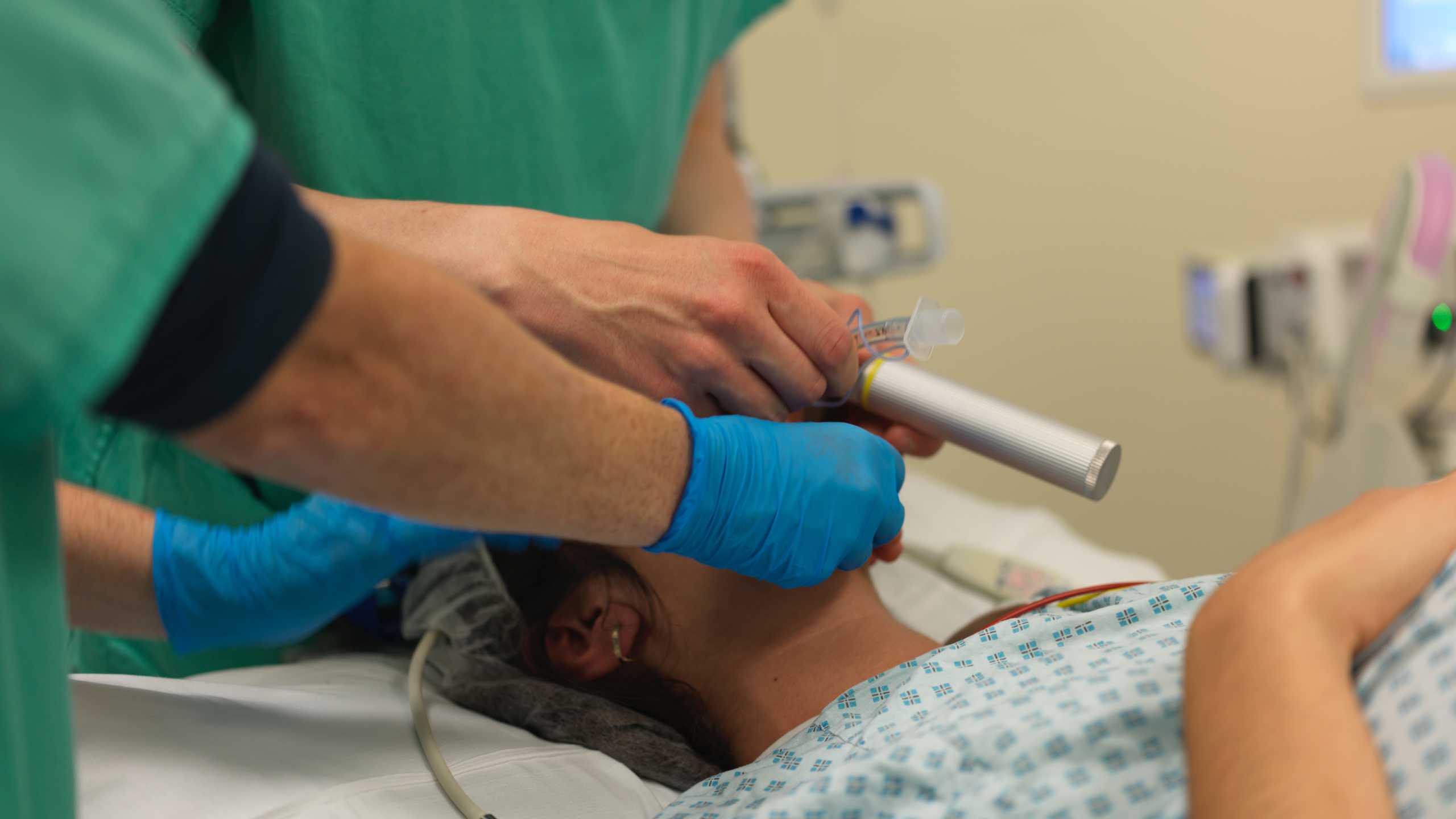
Rapid sequence induction process in theatre
Obstetric AnaesthesiaUse this resource in conjunction with your real-world training

These films have been created for training purposes with individual roles played by medical professionals and/or mannequins.
No actual patients have been used in the videos.
The processes and the procedures follow the Royal Berkshire NHS Foundation trust guidelines at the time of creation.
Experience Summary
In this 360-degree video watch as the anaesthetic team performs a rapid sequence induction (RSI) in the context of a Category 1 Caesarean section.
A Category 1 Caesarean section is performed in the setting of an immediate threat to life of the mother or baby—such as cord prolapse, uterine rupture, or severe fetal distress. In these cases, there is often no time for regional anaesthesia, and general anaesthesia with Rapid Sequence Induction (RSI) is required.
Clinical Context
AMPLE History
Despite the urgency, a focused AMPLE history should be taken en route to theatre or during preparation:
- A – Allergies (especially to anaesthetic agents, antibiotics, latex)
- M – Medications (e.g. anticoagulants, antihypertensives, antiepileptics)
- P – Past medical/anaesthetic history (airway issues, reflux, obstetric complications)
- L – Last meal (aspiration risk)
- E – Events leading up to the emergency (e.g. fetal bradycardia, placental abruption)
Clinical Counselling
Counselling must be brief but empathetic. Explain that:
- A general anaesthetic is needed urgently to safely and quickly deliver the baby.
- She will be asleep and unaware during the birth.
- Common risks: sore throat, nausea.
- Specific risks: aspiration, airway difficulty, very rare risk of awareness.
- The baby may be sleepy briefly after birth due to anaesthetic drugs.
Document verbal consent, acknowledging the emergency nature of the situation.
RSI Safety Checklist and Airway Planning
Before induction, a RSI checklist should be completed to confirm:
- Suction working and nearby
- Monitoring applied (ECG, BP, SpO₂, capnography)
- IV access confirmed
- Induction and emergency drugs drawn up and labelled
- Airway equipment checked (Plan A/B/C)
- Cricoid pressure assigned to trained assistant
Prepare a Plan A/B/C airway strategy:
- Plan A: Intubation with direct or video laryngoscopy
- Plan B: Supraglottic airway device (e.g. i-Gel)
- Plan C: Face mask ventilation or emergency front-of-neck access (FONA) if needed
Performing RSI
- Pre-oxygenate with 100% oxygen for 3 minutes or 8 deep breaths.
- Induction: Use thiopentone or propofol; suxamethonium or high-dose rocuronium.
- Apply cricoid pressure.
- Intubate promptly after muscle relaxation. Confirm placement with capnography.
- Maintain anaesthesia with oxygen and volatile agents; support blood pressure and ensure neonatal and surgical teams are ready.
Learning Objectives
- Understand the rapid sequence induction process and safety critical measures
- Observe an RSI procedure
- Understand the role of a safety checklist
- Understand the key counselling points prior to performing RSI
- Understand the points in an AMPLE history
External Resources
